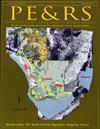Effect of Locust Invasion and Mitigation Using Remote Sensing Techniques: A Case Study of North Sindh Pakistan
IF 2
4区 地球科学
Q4 GEOGRAPHY, PHYSICAL
引用次数: 2
Abstract
This study comprises the identification of the locust outbreak that happened in February 2020. It is not possible to conduct ground-based surveys to monitor such huge disasters in a timely and adequate manner. Therefore, we used a combination of automatic and manual remote sensing data processing techniques to find out the aftereffects of locust attack effectively. We processed MODIS -normalized difference vegetation index (NDVI ) manually on ENVI and Landsat 8 NDVI using the Google Earth Engine (GEE ) cloud computing platform. We found from the results that, (a) NDVI computation on GEE is more effective, prompt, and reliable compared with the results of manual NDVI computations; (b) there is a high effect of locust disasters in the northern part of Sindh, Thul, Ghari Khairo, Garhi Yaseen, Jacobabad, and Ubauro, which are more vulnerable; and (c) NDVI value suddenly decreased to 0.68 from 0.92 in 2020 using Landsat NDVI and from 0.81 to 0.65 using MODIS satellite imagery. Results clearly indicate an abrupt decrease in vegetation in 2020 due to a locust disaster. That is a big threat to crop yield and food production because it provides a major portion of food chain and gross domestic product for Sindh, Pakistan.利用遥感技术对蝗虫入侵和减灾的影响:以巴基斯坦信德省北部为例
这项研究包括确定2020年2月发生的蝗灾。通过地面调查来及时、充分地监测如此巨大的灾害是不可能的。因此,我们采用自动与人工相结合的遥感数据处理技术,有效地找出蝗灾后的影响。利用谷歌Earth Engine (GEE)云计算平台,在ENVI和Landsat 8 NDVI上手动处理MODIS归一化植被指数(NDVI)。结果表明:(a)与人工NDVI计算结果相比,基于GEE的NDVI计算更有效、快捷、可靠;(b)信德省北部、Thul、Ghari Khairo、Garhi Yaseen、Jacobabad和Ubauro的蝗灾影响较大,这些地区更脆弱;(c) 2020年Landsat NDVI值从0.92骤降至0.68,MODIS NDVI值从0.81骤降至0.65。结果清楚地表明,由于蝗灾,2020年植被急剧减少。这对农作物产量和粮食生产是一个巨大的威胁,因为它为巴基斯坦信德省提供了食物链和国内生产总值的主要部分。
本文章由计算机程序翻译,如有差异,请以英文原文为准。
求助全文
约1分钟内获得全文
求助全文
来源期刊

Photogrammetric Engineering and Remote Sensing
地学-成像科学与照相技术
CiteScore
1.70
自引率
15.40%
发文量
89
审稿时长
9 months
期刊介绍:
Photogrammetric Engineering & Remote Sensing commonly referred to as PE&RS, is the official journal of imaging and geospatial information science and technology. Included in the journal on a regular basis are highlight articles such as the popular columns “Grids & Datums” and “Mapping Matters” and peer reviewed technical papers.
We publish thousands of documents, reports, codes, and informational articles in and about the industries relating to Geospatial Sciences, Remote Sensing, Photogrammetry and other imaging sciences.
 求助内容:
求助内容: 应助结果提醒方式:
应助结果提醒方式:


